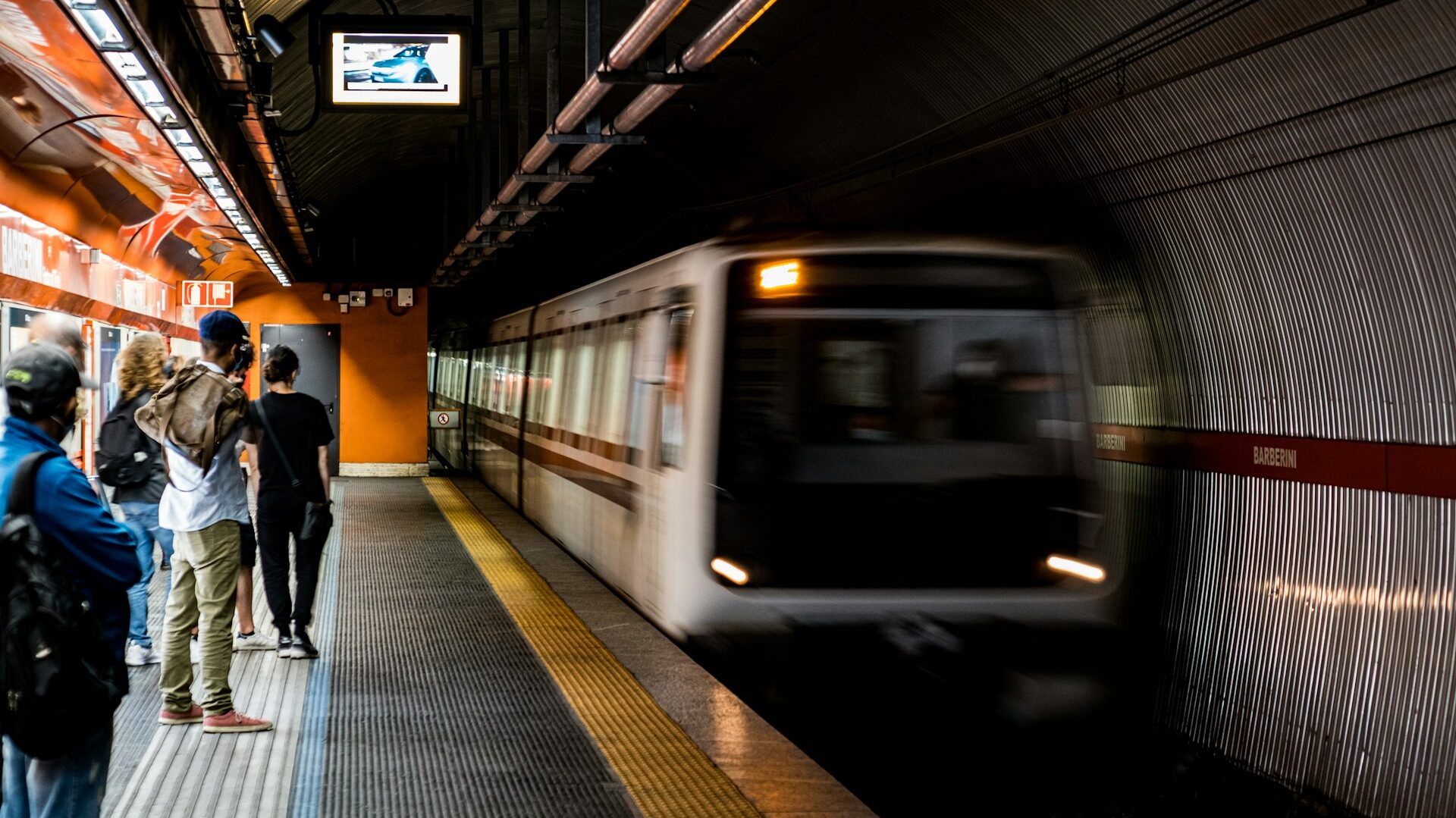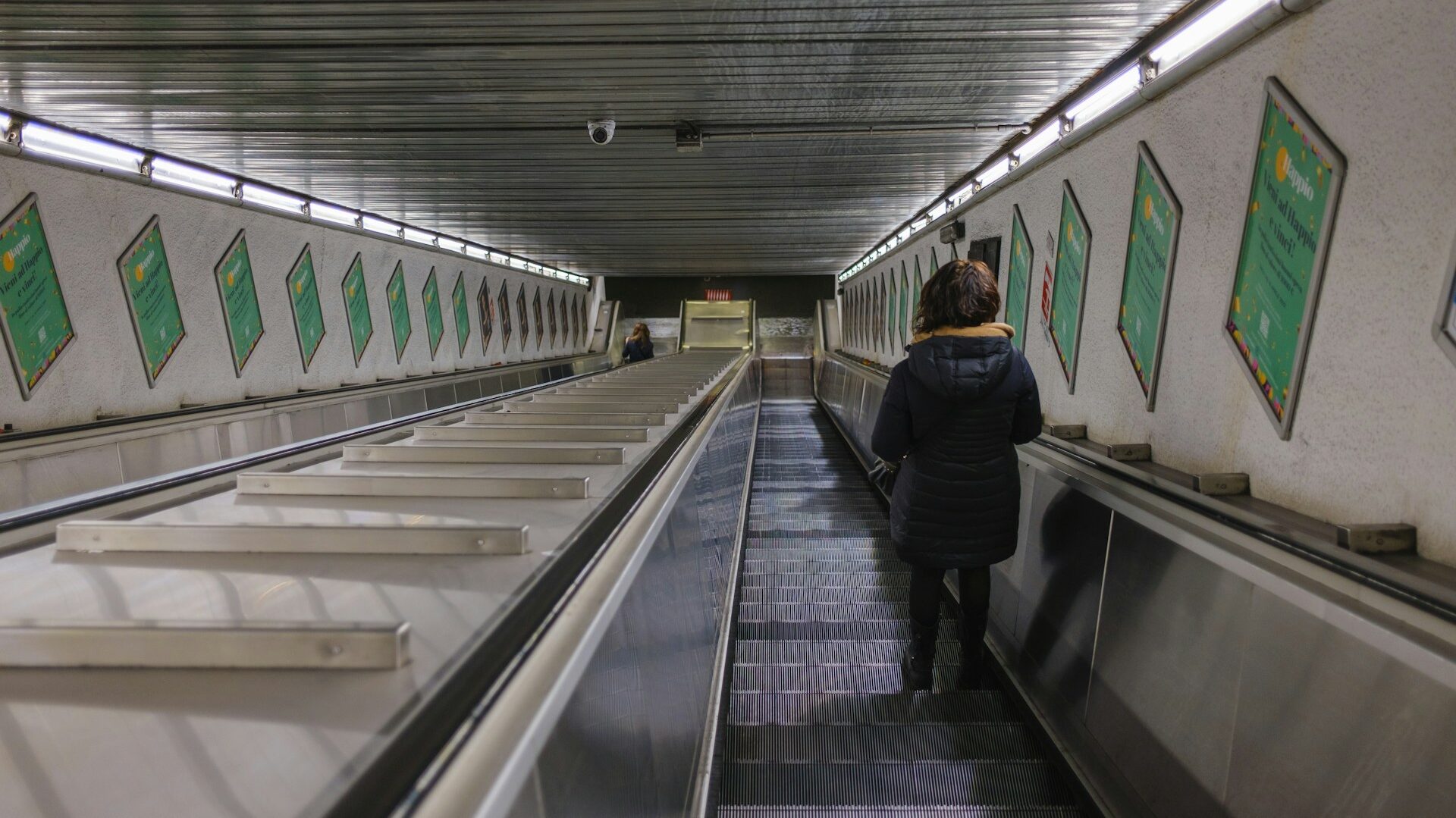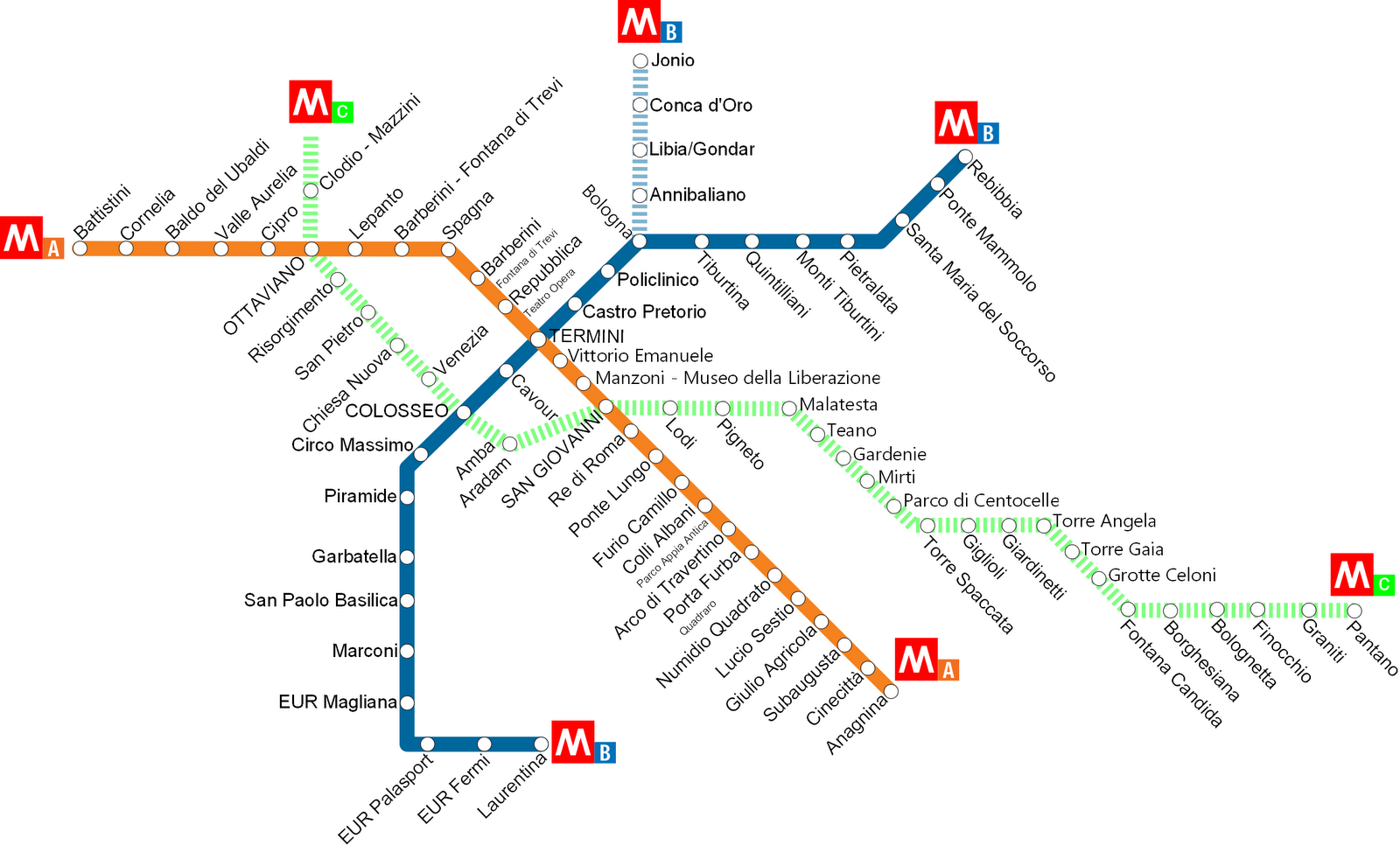Itinerary
Disclaimer
Posts on Visit-Rome.net may contain affiliate links, meaning I get a small commission if you decide to make a purchase through my links, at no cost to you. Any income earned helps maintain this website and keeps it ad-free.
Rome Metro – A comprehensive guide to Rome’s metro system
Rome Metro – A comprehensive guide to Rome’s metro system
Tourist Information on Rome Metro, including Map and Tickets


The Rome metro is the most recommended way to get around Rome as it is efficient and affordable. In this article you will find everything you need to know, including a Rome metro map and how to buy tickets.
Table of Contents
Roma Public Transportation Pass Tickets |
|
My recommendation for tourists visiting Rome for a short period of time is to book the Roma Pass. This includes unlimited public transportation for 48h (or 72H) from the fist validation. As well as unlimited metro, bus and tram transport, it also includes a skip-the-line entry ticket to a museum/archaeological site of your choice (including the Colosseum, Borghese Gallery or Castel Sant’Angelo) and discounted admission tickets to other attractions.
Powered by GetYourGuide
|
Overview of Rome Metro
The Rome Metro, known in Italian as Metropolitana di Roma, is the smallest metro system in Europe spanning around 40 miles and consisting of just 3 simple lines (colour coded): Line A (orange), Line B (blue) and Line C (green). This short size is due to the amount of archaeological remains under Rome and the difficulty to build on these sites.
The three lines cover the majority of Rome city centre, including popular tourist destinations such as the Colosseum and the Spanish Steps, as well as some of the surrounding areas, like the airport and the Vatican City.
The Rome metro opens every day from 5:30 AM to 11:30PM (1:30AM on Fridays and Saturdays). Trains are pretty frequent at peak hours: Line A runs every 2 minutes (max. 20 mins wait off-peak); Line B runs every 3 minutes (every 9 minutes off-peak) and Line C runs every 12 minutes.
If you’re looking to visit some of the city’s top attractions, the metro is a very convenient way to get around.
Rome Metro Tickets and Fares
There are several tickets in Rome that can be used for any transportation method, included the metro. I’ve put together a detailed table with the prices for each:
| Ticket Type | Price | Details |
|---|---|---|
| BIT – Biglietto Integrato tempo (One-way ticket) | €1.50 | Unlimited public transportation for 100 mins since first scanned. Valid access through one metro turnstile. You can buy a pass of 10 BIT tickets for €7. |
| MetreBus 24H | €7 | Unlimited public transportation for 24h from first scanned. It can be used for the metro more than once and it’s valid for only one person. You can also find MetreBus passes for 48H and 72H that cost €12.50 and €18, respectively. |
| CIS – Carta Integrata settimanale (Weekly Pass) | €24 | Unlimited public transportation for 7 days (in a row) with the same terms of use as BIT. |
| Roma Pass | From €32 | Unlimited public transportation for 48h (or 72H) from the fist validation. It can be used for the metro more than once and is valid for one person. It includes a skip-the-line admission to a museum/archaeological site of your choice, including the Colosseum, Borghese Gallery or Castel Sant’Angelo, as well as discounted admission tickets to other attractions. BUY ROMA PASS |
Children 10 years and younger travel free.
All tickets mentioned above are inclusive of transfers between each of the transportation methods.
Please note the following methods of transport are not included:
- Trains and Buses to both Rome airports (including the Leonardo express train).
- Any specific trains to the cruise terminal stations.
- Rome’s Tourist Buses (hop-on hop-off).
Where to Buy Rome Metro Tickets
Public transportation tickets in Rome can be purchased at the ticket machines and ticket offices in any metro and railway station as well as newspapers kiosks around the city.
Most of the metro, bus and tram lines in Rome include now a contactless reader meaning you will also be able to purchase a BIT ticket right on the moment by placing your contactless payment card or device. If you buy more than 4 BIT tickets with the same contactless method within 24h (from the time of the first scan) you will be charge €7 and a MetreBus 24H pass will be activated instead.
|
Important » Remember to ‘tap’ your contactless payment method or scan your pass every time you change a way of transport to avoid facing a fine! If they are all made within 100 minutes you won’t be charge any extra. |
Rome Metro Map
Here is a map of the Rome Metro including all of the key stops across all lines:

Rome Metro Routes
The Rome Metro network has three colour-coded lines, but only two of them will take you to the main tourist attractions.
- The orange line (Line A) opened in 1980 and runs from the northwest to the southeast.
- The blue line (Line B) is the oldest line, inaugurated in 1955. It travels from the northeast to the southwest of the city.
- The green line (Line C) is the newest metro line in Rome, opened in 2014. It passes through the eastern suburbs to the city centre.
The following table includes the main Rome metro stops that can be of interest for tourists and their nearby attractions:
| Line | Station | Connections | Nearby Attractions |
|---|---|---|---|
| A | Cipro – Musei Vaticani | Vatican Museums, Vatican City | |
| A | Ottaviano – San Pietro – Musei Vaticani | Line C (Ottaviano) | Vatican Museums, St. Peter’s Basilica |
| A | Spagna | Spanish Steps | |
| A | Barberini – Fontana di Trevi | Trevi Fountain, Piazza Navona, Pantheon | |
| A | Termini | Line B (Termini) | Termini Station, Basilica di Santa Maria Maggiore |
| A | San Giovanni | Line C (San Giovanni) | Basilica di San Giovanni in Laterano |
| B | Colosseo | Line C (Colosseo) | Colosseum |
Future of Rome Metro
As of 2024, there are plans for a metro line D in Rome. It would run for 20KM approximately, from the northwest to the southeast of the city, connecting areas that are currently without an existing metro station.
This route would have around 22 stops, including the Vatican area, Piazza Venezia, San Giovanni and Eur Magliana, and connections with the other three existing lines.
Apart from this new line, there are ongoing efforts to extend the line C and upgrade the other two with the objective to improve accessibility for disabled passengers.
More on Visit-Rome





